Affiliate disclosure: This post may contain affiliate links. Please see our Privacy Policy.
Raising angora rabbits is one of the most rewarding ways to add small livestock to your homestead. These fluffy fiber animals are friendly, low-maintenance, and can even help pay for their own upkeep with the wool they produce. If you’re wondering whether angoras are right for you, here are five compelling reasons to give them a try.
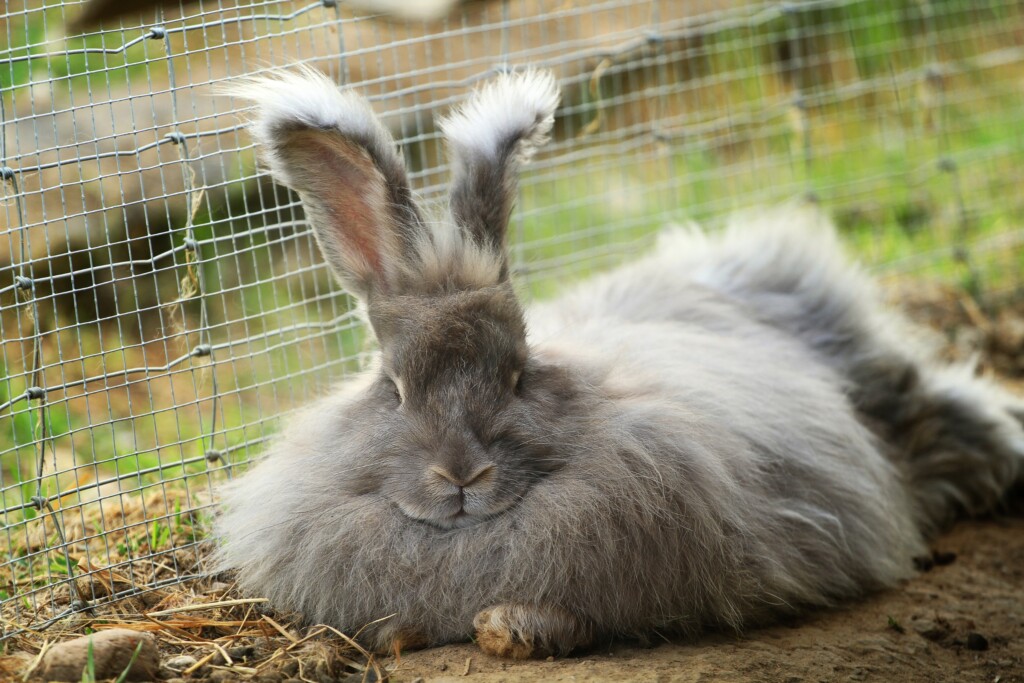
If you’re looking for a small livestock option that’s both charming and productive, raising angora rabbits might be the perfect fit. These fluffy fiber animals are ideal for backyard homesteads, suburban gardens, and even indoor setups.
Whether you’re already keeping rabbits or just starting your self-sufficiency journey, here are five great reasons to consider angoras.
The Fluff Factor
Let’s be honest—angora rabbits are adorable. Their extreme fluffiness isn’t just for show; they’ve been bred specifically for their ultra-soft coats, making them one of the most luxurious fiber animals around. Unlike your average pet, their fiber is not only cute and cuddly—it’s also valuable.
Angora wool is one of the softest natural fibers in the world, prized by hand spinners and crafters for its texture and warmth. There’s something uniquely satisfying about caring for an animal that produces usable fiber from your own backyard (or even your living room).
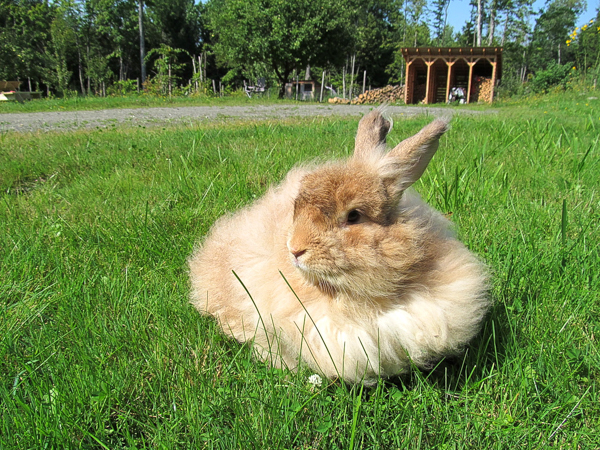
Calm and Friendly Temperament
While not all rabbits enjoy being handled, angoras are known for their calm, docile nature. These rabbits were selectively bred to tolerate and even enjoy frequent grooming, which is a must for keeping their coats in good condition.
If you’re looking for a rabbit that enjoys lap time and petting, angoras are one of the best breeds for human interaction. Their temperament makes them a good choice for families, fiber artists, or anyone looking for a gentle companion animal that also serves a productive purpose.
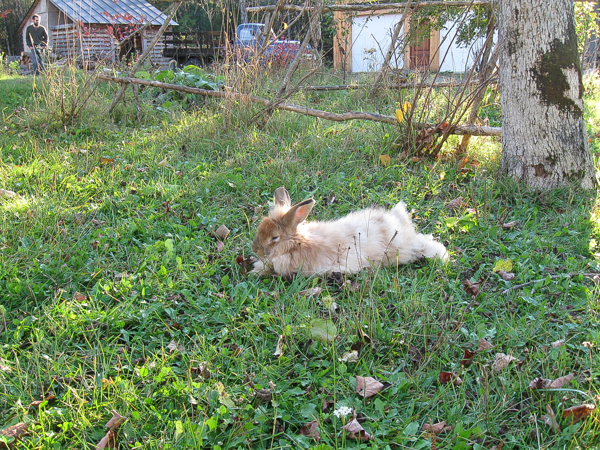
Minimal Feed Requirements
Don’t let the fluff fool you—angoras are surprisingly small animals. Once you harvest their fiber, you’ll realize how tiny they are under all that wool. Most angoras weigh just a few pounds and have relatively slow metabolisms, which means they don’t require much feed.
Our angoras happily munch on just a few tablespoons of pellets daily, along with fresh greens, clover, or the occasional carrot or apple slice. If you’re trying to raise livestock with minimal input, angora rabbits are a budget-friendly option.
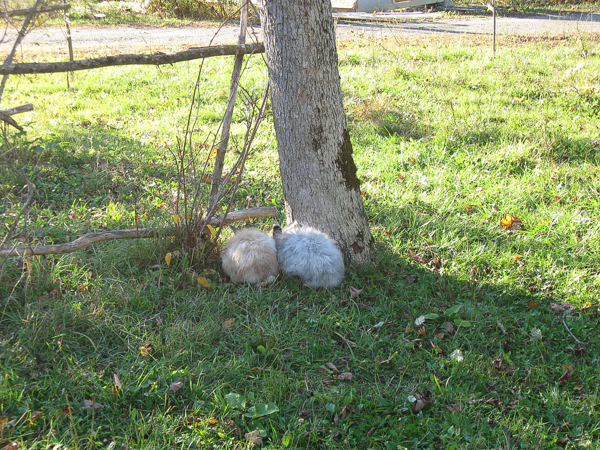
Low-Speed Lifestyle
One unexpected perk of raising angora rabbits is that they’re slow movers, which makes managing them a lot easier. Even with free-range time in the yard, our angoras rarely get more than a few hops before stopping for a rest.
Unlike meat rabbits or traditional pets that seem to have rocket boosters built in, angoras tend to plod along slowly. That means they’re less likely to escape, easier to handle, and a good fit for supervised outdoor time.
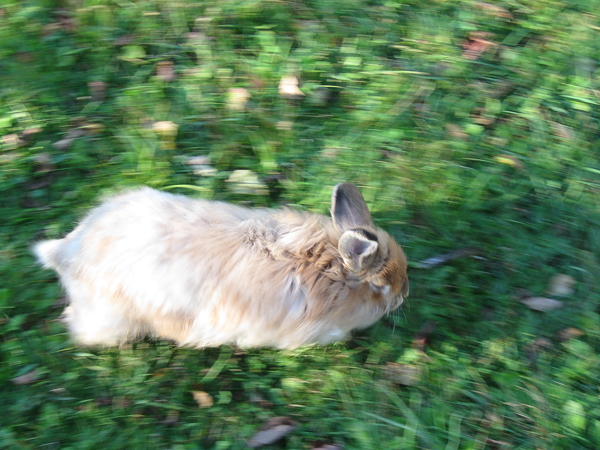
Potential for Profit
Unlike most pets, angora rabbits can actually help cover their own costs. A single angora rabbit can produce 16 to 20 ounces of fiber annually, and if you know how to market angora fiber, high-quality angora wool often sells for $10 to $20 per ounce depending on grade and preparation.
If you take it a step further and learn to spin or felt the fiber, you can create handmade goods like hats, scarves, or needle-felted animals—adding even more value. And if you breed angoras, kits typically sell for $40 to $60 each, making it possible to turn your hobby into a small income stream.
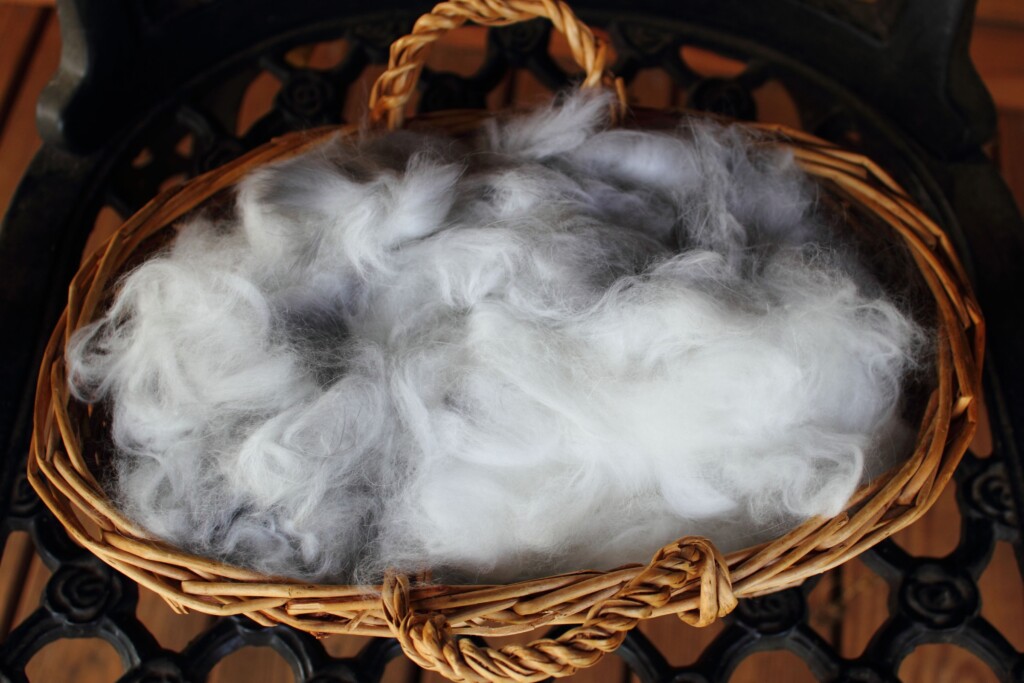
Are Angora Rabbits Worth it?
So, are angora rabbits worth it? If you’re willing to put in the time for grooming and care, they’re an incredibly rewarding addition to any homestead. From their calm personalities to the fiber they produce, raising angora rabbits offers both charm and purpose.
Whether you’re looking for a productive pet, a source of soft luxurious wool, or a fun way to start earning from your homestead, angoras are a fluffy step in the right direction.
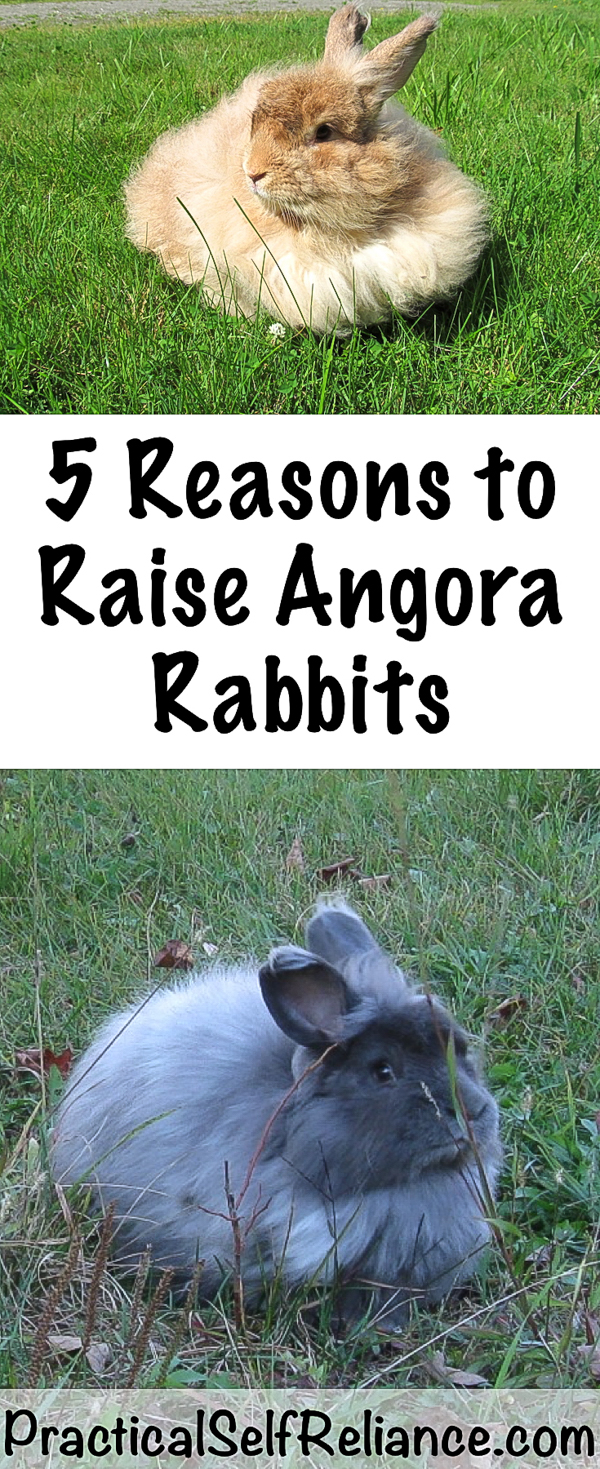
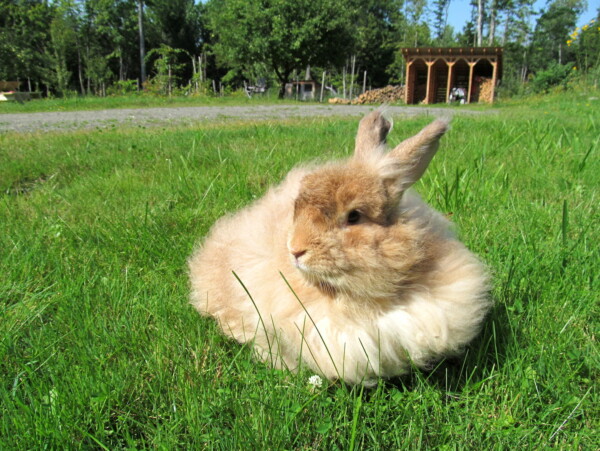
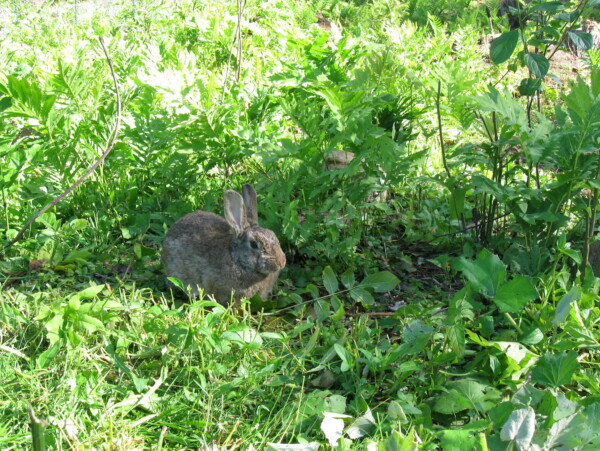

Please post this corrected typo version of the previous post.
Both articles about angora rabbits are misinformed. Angora rabbits are not small bunnies. That is true. They can also run like the wind . As with most domestic farm animals, they have not originally been bred for pets but food and use of their coat. There would not be such a thing as an angora rabbit if they were not bred specifically for their coats. But their coat continues growing and they do not have to be killed to use it. Like most fur bearing animals that shed seasonally their coats keep them warm and they shed the coat with the seasons and climate. So the angora rabbit has been bred for its coat, and while they can be dual purpose for meat and fiber, they are more specifically kept and bred for their fiber. However their coat does not shed with the seasons like cats and dogs, but according to growth cycles. The fiber will shed naturally and for eons it was bred to harvest for its warmth. The coat will be prime at 13 weeks and will start to shed back after this so should be harvested regularly with the growth cycles. When prime and coat is just about ready to shed, it comes out easily and does not hurt the bunny. You can do the pinch test to tell . Take a few hairs between your fingers and give a little tug. If bunny flinches it is not ready. Bunny will not feel it and not move or flinch when it is ready . The true way to care for the coat is to breed for easy care because if it felts on the bunny it means there is not enough guard hair and will felt on the garment. The coat should NEVER be brushed because that loosens the fibers and contributes to wool block . (Wool block is like the cat hair ball except that the cat can regurgitate it to remove it but the bunny cannot. The best preventative for wool block is not to brush and to remove pellets once a week and feed hay on that day – called a pellet fast). The coat can be gently combed but the recent practices of people that show them is to blow the coat with a special blower to remove webbing. In recent times the coat has been bred to hold the length longer for showing and not to matt. Some varieties like German are so prolific fiber producers that the coat needs to be sheared.
Angora is 8x warmer than wool and it has amazing thermal properties that also will alleviate pain by increasing circulation and blood flow. It is the finest and warmest fiber on the planet by domestic fiber producers (only found finer on the wild vicuna). Even qiviut cannot match the fineness of Satin angora and the thermal capacity of all angora types. While they make good pets they are and should primarily be, a spinner’s pet. There is nothing wrong with turning that little bit of fluff into something warm and wonderful to wear. This is a labor intensive hobby and the angora fiber is often sold raw to pay for the expenses. But is has the best return by adding value with spinning it into yarn and knitting or weaving it into something beautiful .
The intense fiber producing angora rabbits, should not be kept just as pets, as the pet lover will soon grow tired of all the work of maintaining the coats. There are several pet varieties that are a much better choice like Fuzzy lops or Jersey woolies. But the main breeds of angora like French, English, Satin, Giant and German angoras should be kept for show and fiber passions not primarily as a pet.
If you think that these beautiful creatures should not be productive fiber producers for turning that fluff into something beautiful to wear or heal, you are misinformed and the animals would not survive for very long. Certainly not in the wild and not as pets. If you are PETA promoter please become better informed before making statements that will inevidably deny the existence of these beautiful animals.
I am considering raising and/ breeding Angoras for fiber, but I would love to get some more information about what I should expect and how to best care for them. I was wondering if you would know where I could get more information?
Have you seen the two other posts that we have about raising Angora rabbits? https://practicalselfreliance.com/angora-rabbit/ andhttps://practicalselfreliance.com/selling-angora-fiber-from-backyard-rabbits/
I am new to angora rabbits. I enjoyed your article..Thank you for sharing your information.
You’re very welcome. We’re so glad you enjoyed it.
I cannot believe how wrong this article is.
Hopefully you have educated yourself in the years following this. Because this needs some serious editing. They are not small rabbits. They have a super fast metabolism. They eat ALL DAY LONG!! Constantly eating. That is how their bodies literally work. Breeding is unethical. And the lives of animals shouldn’t be for profit. Especially when most of them end up in shelters/rescues/dumped on the streets.
Not a single good thing about this article
This article was written based on actual personal experience with owning Angora rabbits not simply reading about them in a book. If you have specific information on the metabolism rates of angora rabbits please feel free to share. We are always willing to learn something new. There are multiple types of angora breeds of different sizes. The difference in size will of course impact the amount of feed that is required for proper care. The main point is that when the rabbits are offered clover along with other fruits and vegetables that the amount of feed required is minimal in comparison to other larger animals. This blog is about self-reliance which in many cases involves breeding and raising animals for fiber, food, profit or any other human need. As homesteaders, we don’t see anything unethical about that, but you’re certainly welcome to have your own opinion.
I’m trying to find angora rabbit breeders in the PNW and most charge around $200 per rabbit not $40 or $50.
The pricing will definitely vary by region and availability as well as what the rabbits are bred for. For example, a rabbit that is bred for its fiber is going to be in a completely different price category than one that is bred for showing or competition just like any other animal. I hope you are able to find something more affordable in your area.
Those Informations are not True. You should t groom Angoras, this leads to felting. Angora rabbits are average sized rabbits with about 5lb not 2lb like guinea pigs. They eat a lot. A German Angora gives you about 25 and 50 oz wool per year and the wool is Mostly Sold for 4$ per ounce.